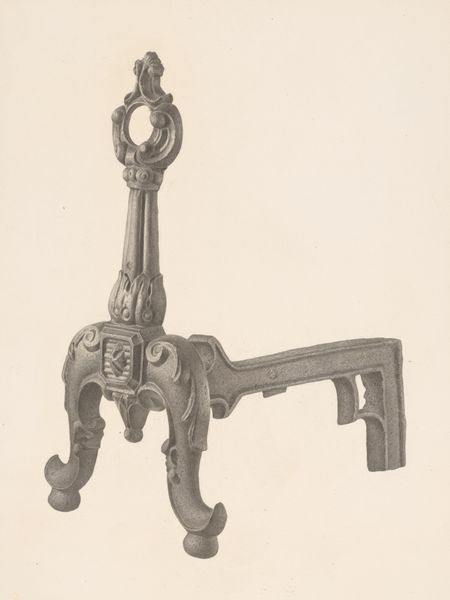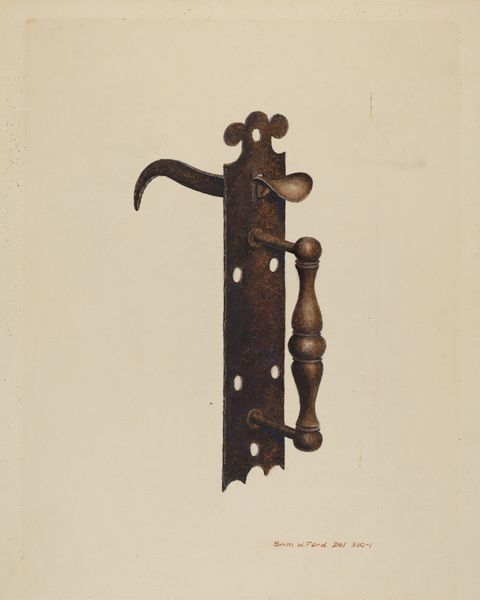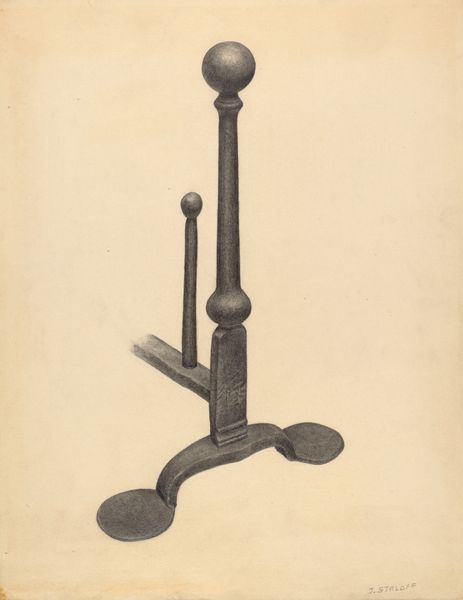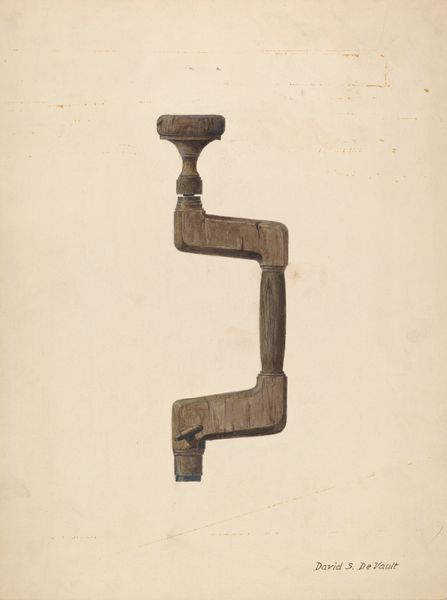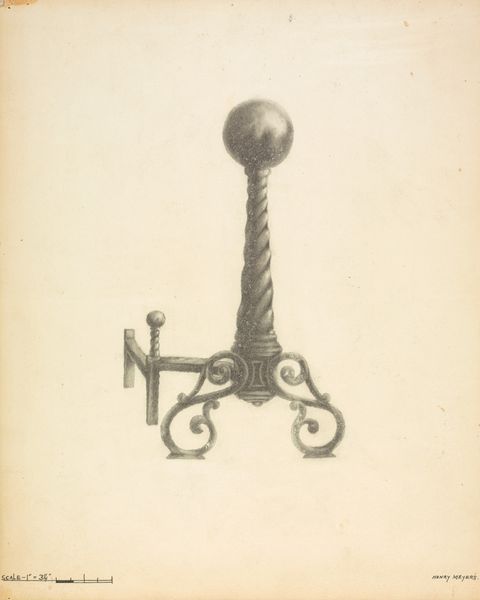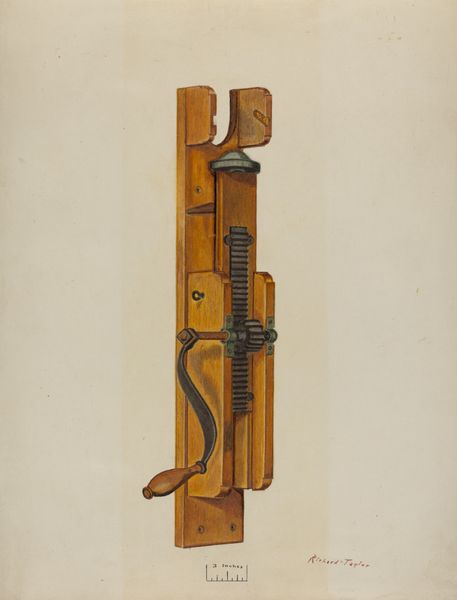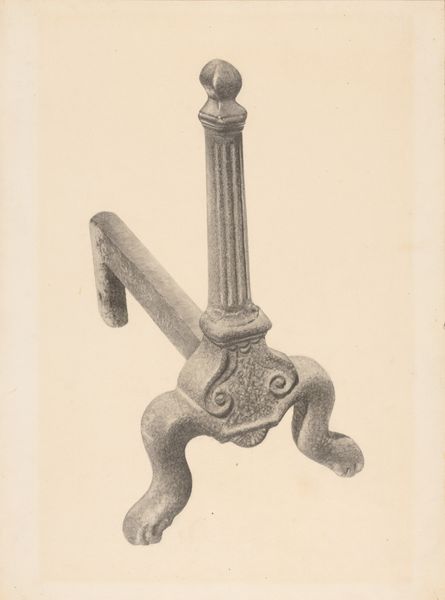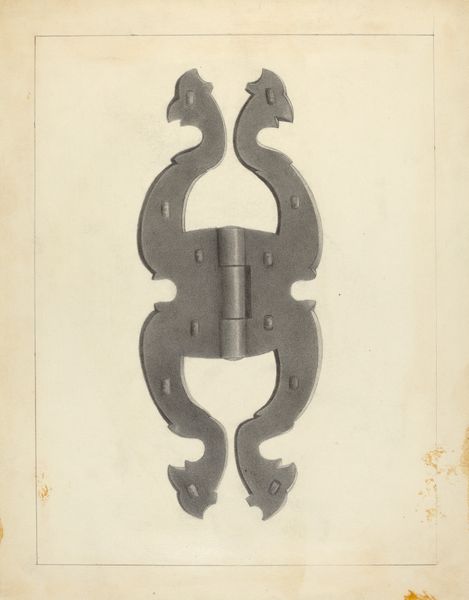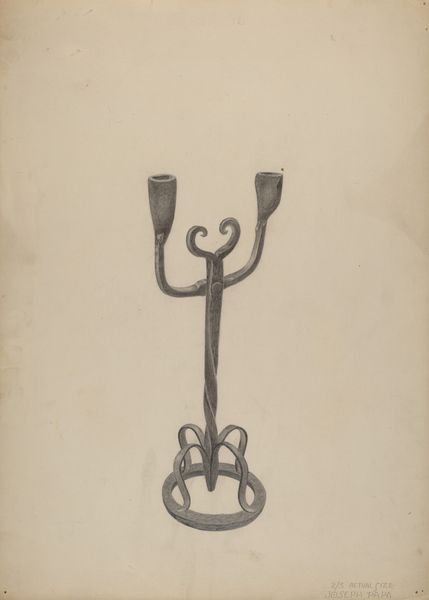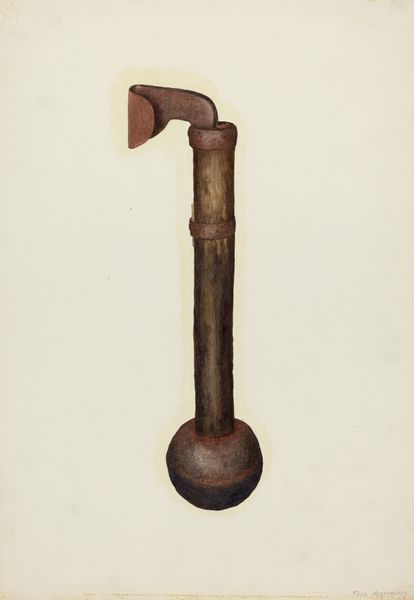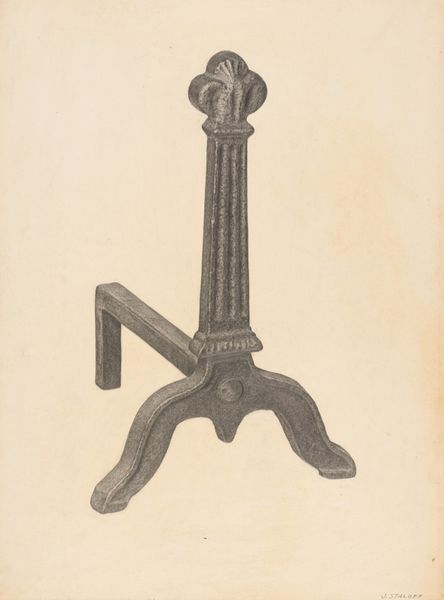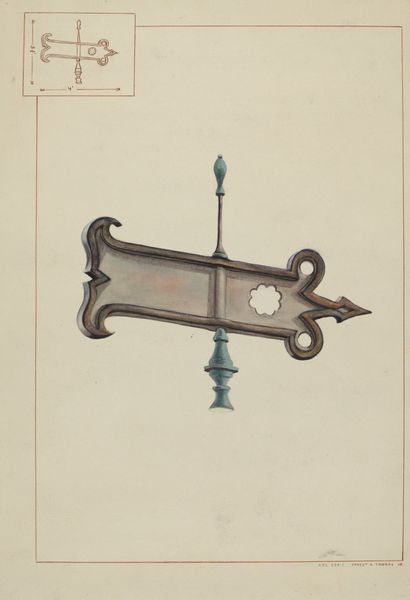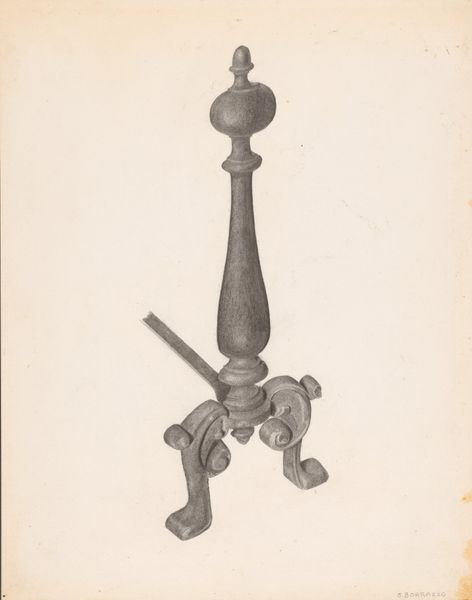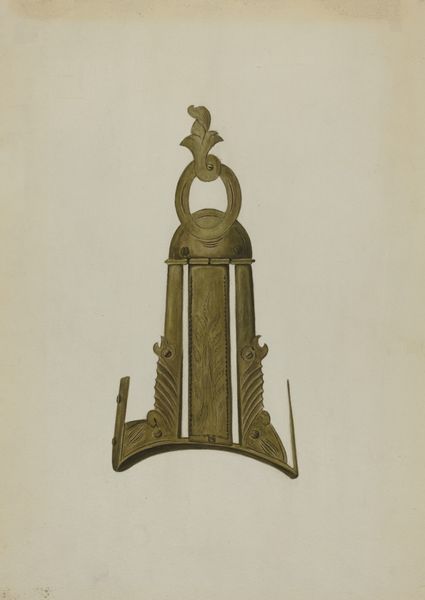
drawing, pencil
#
drawing
#
pencil
#
academic-art
#
realism
Dimensions: overall: 28.8 x 22.8 cm (11 5/16 x 9 in.)
Copyright: National Gallery of Art: CC0 1.0
Editor: Here we have Mildred Ford's pencil drawing, "Door Handle with Thumb Press," created around 1938. It's surprisingly captivating, a simple object rendered with such detail. What kind of imagery springs to your mind when you look at it? Curator: The drawing, to me, isn’t just of a functional object, but a gateway to considering larger ideas of access and permission, maybe even psychological boundaries. Consider the doorknob, an archetypal image, repeated through time in multiple artistic languages, an elemental interface – a point of transition, but also exclusion. Doesn't the specific ornamentation, that quasi-Gothic fleur-de-lis at the top, suggest something of the history it's attached to? Editor: That's fascinating, I hadn't considered the architectural context at all. It seems like more than just the depiction of a common object then, because of this symbol of power or... what could we say instead of power? Curator: How about, agency? Consider how repeated forms and symbols impact our cultural memory. What does it say, perhaps, about the promise of entry implied by every door and the expectations that come with entering? This is a symbol invested with societal significance. Are we on the inside, or outside, the domain or psyche of the person/structure? How does that weight influence the experience? Editor: Agency – I like that! The focus shifts from the door itself to the person using it, their intent. The way the handle's aged also hints at so many stories... Curator: Exactly! The thumb press and textured metal is about a narrative steeped in physical contact. These objects connect us not only to spaces but to the histories of those spaces. This drawing speaks about layers of existence...a past one and also ones we carry into a possible future. Editor: I hadn't thought a simple door handle could be so laden with symbolism! It enriches our encounter, understanding there's also a potent symbolic past carried by simple drawings of this age-old motif. Curator: Yes, exactly! Thinking symbolically connects us more intimately to both our history, but also towards psychological perception!
Comments
No comments
Be the first to comment and join the conversation on the ultimate creative platform.
